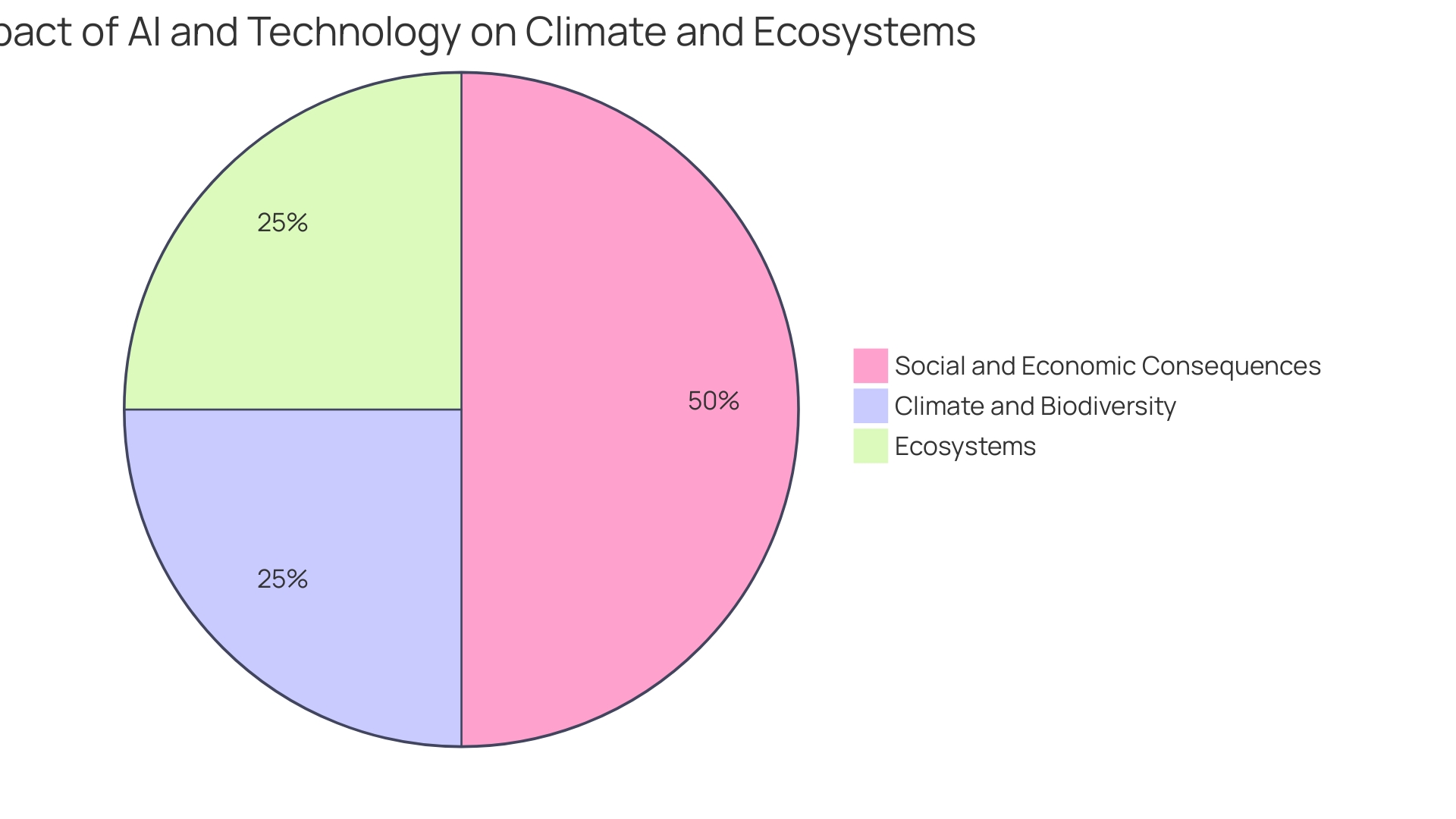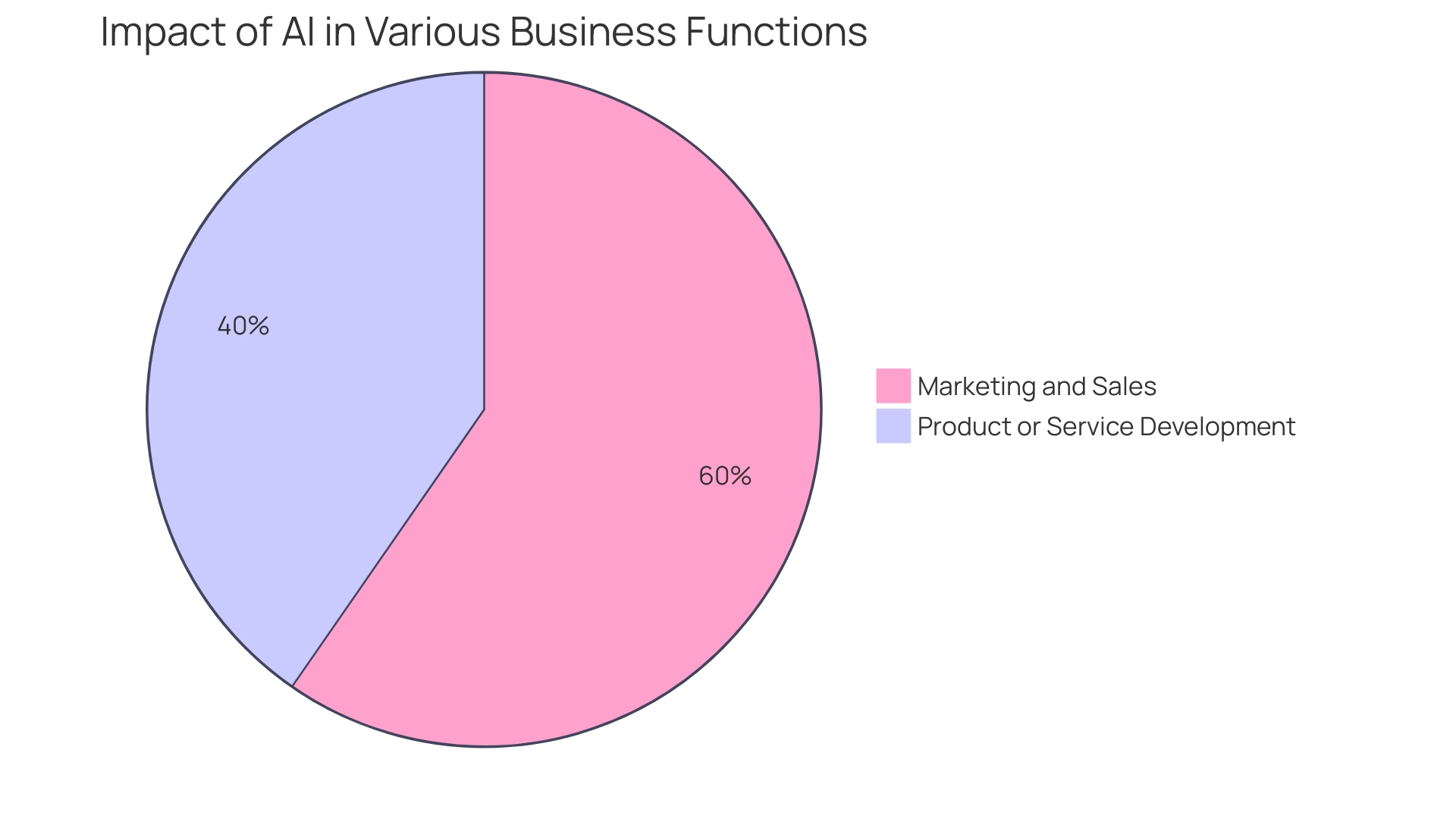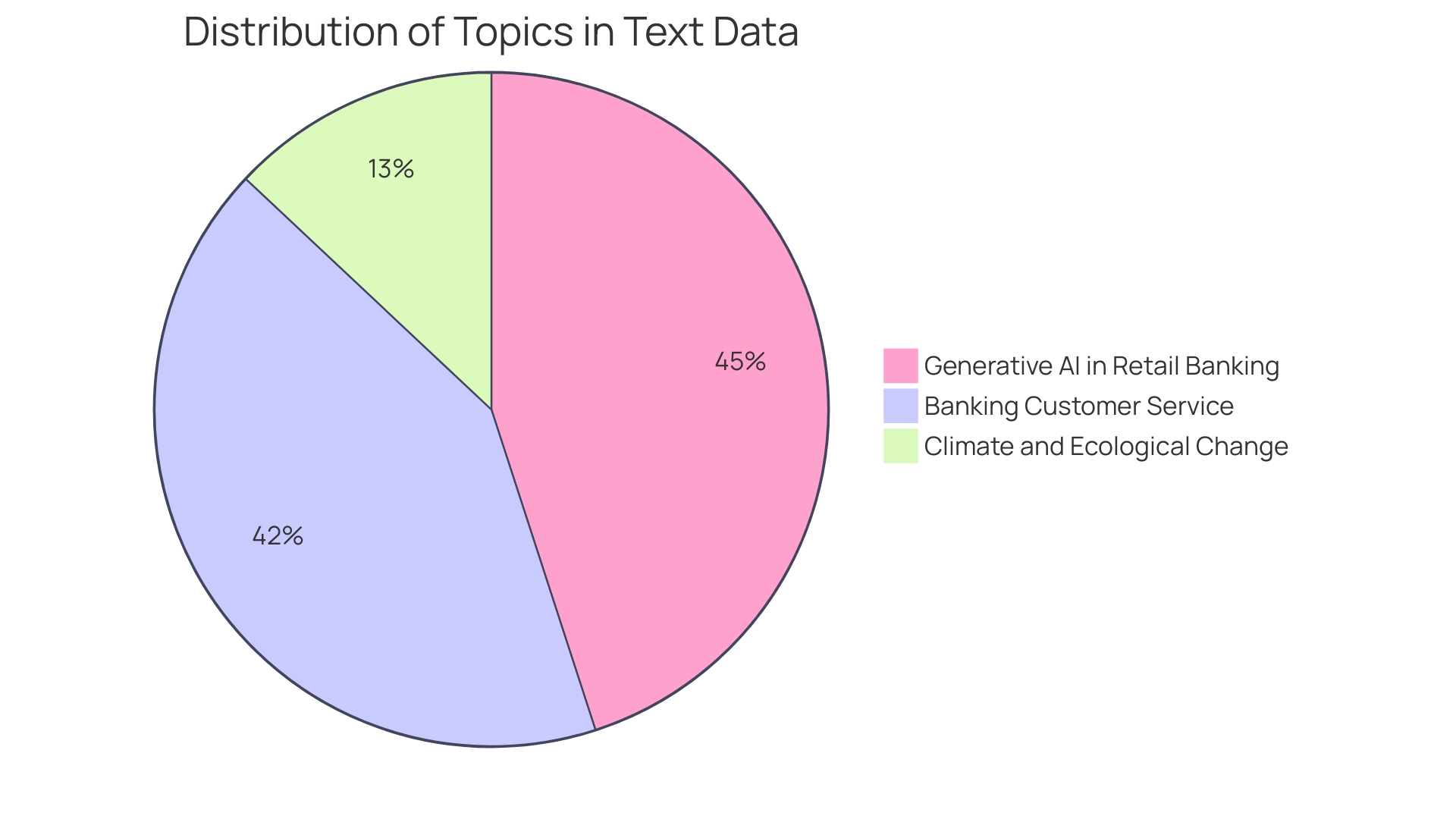Introduction
As industries strive for increased efficiency, scalability, and innovation, the integration of Artificial Intelligence (AI) and Cloud Computing has emerged as a vital component of digital transformation. This strategic fusion unlocks new possibilities in advanced technology, addressing challenges such as data management, scalability, governance, security, and transparency. The harmonization of AI and cloud technologies expands the potential of cloud adoption, influencing various sectors worldwide.
While organizations embrace generative AI models to foster innovation and remain competitive, they also face obstacles that can hinder the success of their cloud programs. By understanding and overcoming these challenges, businesses can optimize their cloud ROI and effectively prioritize their migration journeys. In this article, we explore the synergistic relationship between AI and Cloud Computing, the emerging trends in this field, the impact of AI on cloud adoption, the integration of Edge Computing and AI, security enhancements through AI, and real-life case studies of AI and cloud computing in the finance industry.
We also delve into the future directions and challenges that lie ahead in this dynamic landscape of AI and Cloud Computing.
Synergistic Relationship Between AI and Cloud Computing
As industries globally seek to enhance efficiency, scalability, and innovation, the synergistic relationship between Artificial Intelligence (AI) and Cloud Computing has become a cornerstone of digital transformation. The integration of AI with cloud solutions is not merely a combination of two IT trends, but rather a strategic fusion that unlocks new avenues of advanced innovation. This harmonization is key to addressing challenges such as data management, scalability, governance, security, and transparency, which are critical when implementing generative AI models.
The real benefit of computing in the sky is diverse, including IT efficiency, business creativity, and the integration of advanced technologies such as generative AI. These elements together expand the potential of adopting cloud technology, influencing various sectors and geographical regions. However, it is also important to acknowledge the fundamental obstacles that can hinder the success of programs in the sky. By identifying and understanding these obstacles, organizations can enhance their strategies to maximize return on investment in the cloud and prioritize their migration journeys effectively.
In the current business landscape, companies of all sizes across multiple industries are adopting generative AI models, driven by the need to foster innovation and maintain competitiveness. This adoption is changing ROI dynamics, as organizations balance investments in the sky with the expected benefits. For instance, Ampere Computing's Head of AI, Victor Jakubiuk, sheds light on how their Cloud Native Processors are driving high-performance, scalable, and energy-efficient solutions tailored for the sustainable cloud, amidst the challenges of server shortages and rising operational costs.
The implementation of AI in various sectors spans a wide array of functions, from customer service chatbots to predictive analytics in healthcare. With the latest AI stats and trends, companies can stay ahead of market shifts, innovate, and optimize operations. As we celebrate AI Appreciation Day, the reflections from industry experts underscore Ai's transformative impact and its role as a paradigm shift in problem-solving and innovation. This technological evolution offers unprecedented flexibility, enabling enterprises to adapt swiftly to a rapidly changing world.

Emerging Trends in Cloud Computing
The scope of computing in the sky is constantly growing, influenced by a combination of IT productivity, business innovation, and advanced technologies. The incorporation of Artificial Intelligence (AI) into platforms is particularly crucial, as it opens new avenues for value creation and efficiency. Generative AI, for example, is revolutionizing services by generating content from natural language queries, which necessitates a robust and versatile infrastructure. This transformation is evident across various industries and has become a cornerstone in the pursuit of digital transformation—a comprehensive change in the way organizations operate and deliver value to their customers.
NVIDIA Inception's assistance for startups by providing access to technology and investors highlights the significance of fostering innovations that leverage the potential of AI in cloud-based solutions. As AI infiltrates every aspect of infrastructure, businesses are adapting to a new compute paradigm that is more distributed and requires an intricate interplay of specialized components from chips to networking cards.
The rise in AI's role in cloud technology is reflected in the market growth, with the AI market projected to reach a volume of US$738.80 billion by 2030, driven by applications in fields like speech recognition and autonomous vehicles. This growth emphasizes the need for companies to stay abreast of AI trends and leverage them for competitive advantage. As firms embrace cloud-native processes, challenges such as server shortages and operational costs emerge, prompting a search for sustainable and efficient solutions.
In this ever-changing environment, the utilization of blockchain within security exemplifies the innovative approaches being adopted. Blockchain's decentralized nature ensures secure transaction authentication and data sharing, presenting a formidable defense against hacking attempts. It is through these advancements in AI and related technologies that the use of the internet to store and process data is set to evolve, offering organizations the tools to drive innovation and excel in an era marked by digital disruption.

AI-Driven Innovations in Cloud Computing
Leveraging the potential of Artificial Intelligence (AI) has become a crucial element in improving strategies for cloud-based technology. As organizations strive to maximize their Return on Investment (ROI) from adoption of cloud services, AI emerges as a transformative force in various aspects of IT productivity and business innovation. Generative AI, in particular, is reshaping the ROI dynamics by enabling more advanced applications and smarter, responsive experiences.
Substantial benefits from the utilization of AI are obtained through its incorporation in various sectors and locations. This synergy is not without its challenges, however. Numerous cloud programs encounter challenges because of a lack of harmony between cloud investments and anticipated benefits, but artificial intelligence, particularly generative models, provides a pathway to surmount these obstacles by enabling extensively distributed and accelerated processing platforms that operate on robust infrastructures.
In light of the recent AI advancements, September marked a notable period of innovation. AI's potential to address some of the most pressing global challenges is being realized more than ever, with a promise of enhanced efficiency across sectors. For instance, companies like Ampere Computing are addressing the acute shortage of servers and rising operational costs by driving high-performance, scalable, and energy-efficient cloud-native processor solutions. This approach is not only affordable but also sustainable, considering the environmental implications of server shortages.
Market statistics reflect the burgeoning influence of AI, with the AI market size expected to reach a staggering $305.90 billion by 2024 and continue to grow at a CAGR of 15.83% until 2030, potentially hitting $738.80 billion. This rapid market growth is propelled by the increasing adoption of AI applications and services, including natural language processing tools, computer vision applications, and machine learning algorithms.
Key players such as Google, OpenAI, IBM, and Microsoft are leading the charge, innovating in areas ranging from healthcare, where AI aids in disease diagnosis and drug development, to customer service enhancements through virtual assistants and chatbots. The strategic deployment of AI in cloud technology not only drives technological advancement but also serves as a cornerstone for businesses to thrive in an increasingly competitive landscape.
Edge Computing and AI Integration
The fusion of Edge Computing with AI is transforming our approach to data processing, with significant effects on Cloud Computing. Edge computing brings computation closer to data sources, enhancing responsiveness and decision-making. This paradigm shift is evident across multiple sectors, with WI-Fi-enabled Edge AI reshaping real-time applications in smart healthcare, retail, and more. The synergy of these technologies enables immediate insights, altering response speed and communication across networks.
For instance, in healthcare, Edge AI and Wi-Fi are empowering the Internet of Medical Things (IoMT), allowing medical staff to access real-time data from various sensors for timely decision-making. In critical environments like ICUs, this combination minimizes administrative tasks, freeing medical personnel to focus more on direct patient care and promoting ambient intelligence in healthcare settings.
Moreover, companies like NVIDIA are assisting startups through the NVIDIA Inception program, providing technological tools and investor connections to foster rapid growth and innovation in Edge AI applications. Amidst the challenges such as server shortages and rising operational costs, as highlighted by Victor Jakubiuk of Ampere Computing, Edge AI presents a sustainable, cost-effective solution.
As artificial intelligence propels us towards an era of edge technology, we can anticipate benefits like reduced latency, lower energy costs, and enhanced privacy. The move towards edge computing signifies a strategic shift from centralized cloud servers to localized computation, which is poised to redefine the landscape of technological innovation and efficiency.
Security Enhancements Through AI in Cloud Computing
Artificial Intelligence (AI) is revolutionizing the realm of cyber security, bringing forth advanced capabilities to protect cloud-based systems. As digital threats become more sophisticated, Ai's role in enhancing security measures has become critical. Utilizing machine learning algorithms, AI can analyze patterns and detect anomalies, providing a robust defense against cyber threats. The tool has been crucial in identifying synthetically generated images used to create fake profiles on social platforms, a challenge highlighted by the experience of Bumble Inc. in the second half of 2022.
In the broader context, AI-driven security solutions offer superior protection and faster response times, addressing the increasing incidents of cyber security risks. The integration of AI in cybersecurity is a major focus of research development, aiming to identify system vulnerabilities quickly and defend against ransomware, social engineering, and more advanced malware. The global AI in Cybersecurity market dynamics suggest a growing demand for cloud-based security solutions, particularly among small and medium-sized businesses seeking to leverage digital media for growth. Nevertheless, the sector encounters obstacles like a deficiency of proficient experts, funding, access to digital tools, and data availability, conceivably impeding AI project advancements.
Furthermore, the utilization of AI for public security is gaining momentum, as observed in Japan's predictive system employed in Brazil to anticipate potential crimes, demonstrating Ai's potential in societal applications. This aligns with the vision of a safer world where autonomous systems, including robots, drones, and self-driving cars, collaborate for security. The urgency for AI-driven security is echoed by international experts and organizations like OODA, which provide comprehensive services to global corporations and governments. As AI continues to permeate every industry, its confluence with cybersecurity is indispensable for creating resilient and secure connected systems.
Impact of AI on Cloud Computing Adoption
Artificial Intelligence (AI) has become a crucial element in shaping the future of computing in the skies and cybersecurity, greatly impacting organizational operations and strategic decision-making. The integration of AI into cloud computing not only enhances IT productivity but also fosters innovation and the application of advanced technologies. With the advent of generative AI, companies are reimagining the potential of cloud adoption, uncovering new sources of value that can be leveraged across various industries and geographies.
As enterprises confront the intricacy of strategic, operational, and tactical decisions, Ai's role in assisting these processes cannot be underestimated. Strategic decisions, which set the long-term direction and are often made by top management, can benefit from Ai's data-driven insights for better planning and significant shifts in trajectories. On the operational front, middle management can utilize AI to optimize day-to-day operations, making processes more efficient and effective.
Moreover, trust in AI varies globally, with a study revealing that while 75% of people in India are willing to trust AI, the figures drop to 15% in Finland and 23% in Japan. This disparity suggests a varied pace in the adoption of AI for decision-making internationally, which could profoundly affect technological competitiveness among nations.
In the realm of cybersecurity, AI's impact is equally transformative. With a pressing talent shortage in the tech industry and an increase in sophisticated cyber attacks, Ai's ability to detect potential threats becomes a crucial asset. Actually, only 7% of companies currently utilize AI in major strategic decisions, yet 75% of leaders recognize that Ai's advanced capabilities, particularly generative AI, will be crucial in differentiating their companies from competitors.
The application of generative AI is seeing the highest adoption rates in marketing and sales at 34%, and in product or service development at 23%, indicating its growing influence across organizational functions. This shift in dynamics underscores the urgency for companies to align their technology investments with AI advancements to maintain a competitive edge and protect against emerging cyber threats.
In conclusion, as AI continues to drive innovation and customer engagement, businesses must adapt and evolve to harness the full potential of cybersecurity and ensure that Ai's transformative power is fully realized in the decision-making landscape.
Case Studies: AI and Cloud Computing in Finance
The finance industry has been leading the way in adopting artificial intelligence (AI) and leveraging technology to address intricate problems and improve operational effectiveness. Institutions within this sector manage a colossal volume of data, including intricate transaction records and extensive customer information. Ai's capability to understand and address issues rapidly and accurately has been instrumental in improving decision-making processes. In the context of Anti-Money Laundering (AML) compliance, these innovations have had a transformative impact, enabling banks to enhance their customer service and streamline their operations. Additionally, the sector has seen significant advancements in combating fraud and bolstering security measures. Ai's machine learning models excel in detecting unusual transaction patterns that may signal fraudulent activities, providing real-time monitoring and alerts for swift action. The integration of AI and cloud computing has not only transformed IT productivity and business innovation but has also paved the way for advanced tools, such as generative AI, to further enhance the value from cloud adoption. The financial industry's experience with these advancements is a testament to the synergy between data—the lifeblood of AI—and the innovative solutions that emerge when high-quality, relevant data is utilized. As institutions continue to harness these tools, they are setting new benchmarks for efficiency, customer satisfaction, and regulatory adherence, while also navigating the challenges of ensuring a consistent supply of clean data to maintain the reliability of AI systems.

Future Directions and Challenges
Artificial intelligence's role in enhancing public security is becoming increasingly apparent, as evidenced by the development of AI-driven crime prediction systems like Japan's Crime Nabi. This technology, which has shown high accuracy in forecasting crime locations and timings, exemplifies the innovative use of AI to bolster law enforcement efficiency. Similarly, the integration of AI with quantum computing is another frontier, with the former set to enhance the computational prowess of quantum systems, enabling them to tackle complex tasks that are beyond the scope of classical computing. This synergy is expected to accelerate the development of quantum algorithms and circuits, with AI smoothing out quantum errors and refining results. Additionally, AI is poised to tackle the cybersecurity market by expediting the detection and response to cyber threats, thus enhancing security measures beyond human capabilities. However, the industry faces significant hurdles, such as the scarcity of skilled AI professionals, funding limitations, and technological access challenges, which could impede the progress of AI initiatives. Furthermore, Ai's current limitations in defending against sophisticated cyber threats like advanced persistent threats (Apts) underscore the need for continuous innovation in AI capabilities to match evolving security demands. The ambitious AI2050 Initiative seeks to address these challenges by identifying and focusing on the 'hard problem of AI, aiming to harness its potential for societal benefit while mitigating associated risks.
Conclusion
In conclusion, the integration of AI and Cloud Computing is a vital component of digital transformation. It unlocks new possibilities in technology, addressing challenges like data management, scalability, governance, security, and transparency.
The harmonization of AI and cloud technologies expands cloud adoption potential, influencing various sectors worldwide. Organizations embracing generative AI models foster innovation and competitiveness. Overcoming obstacles optimizes cloud ROI and migration journeys.
Emerging trends in cloud computing are driven by IT productivity, business innovation, and advanced technologies. AI integration opens new avenues for value creation and efficiency. The AI market is projected to reach $738.80 billion by 2030.
Fusion of Edge Computing with AI transforms data processing, enhancing responsiveness and decision-making. Edge AI provides a sustainable, cost-effective solution, addressing challenges like server shortages and operational costs.
AI revolutionizes cybersecurity, offering advanced protection and faster response times. It is crucial for creating resilient and secure connected systems.
AI shapes the future of cloud computing and cybersecurity, influencing operations and decision-making. It aids strategic planning, optimizes operations, and enhances cybersecurity measures. Generative AI adoption is high, urging alignment of technology investments with AI advancements.
In the finance industry, AI and cloud computing solve complex challenges, enhance efficiency, and improve decision-making. They transform compliance, fraud detection, and security measures.
Future directions include enhancing public security, integrating AI with quantum computing, and tackling cybersecurity challenges. However, challenges like skilled professional scarcity and funding limitations exist.
In summary, the synergy between AI and Cloud Computing offers unprecedented opportunities for innovation and efficiency. Organizations must embrace these technologies, overcome challenges, and align strategies for successful digital transformation.




